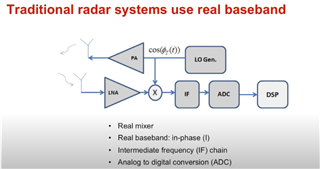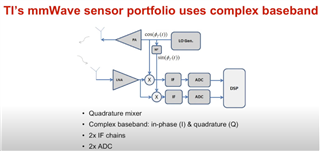Other Parts Discussed in Thread: AWR2944, AWR2243, AWR1843AOP, AWR6843AOP
Tool/software:
Hello Officer,
I am trying to understand the differences between "Real Baseband Radar Systems" and "Complex Baseband Radar Systems."
I watched TI's video, which provides information about these topics. I have included screenshots from the video below.


The AWR2944 uses the Real Baseband System according to AWR294x Technical Reference Manual (Rev. D).
Best Regards,
Mehmet Serhat Arslan

